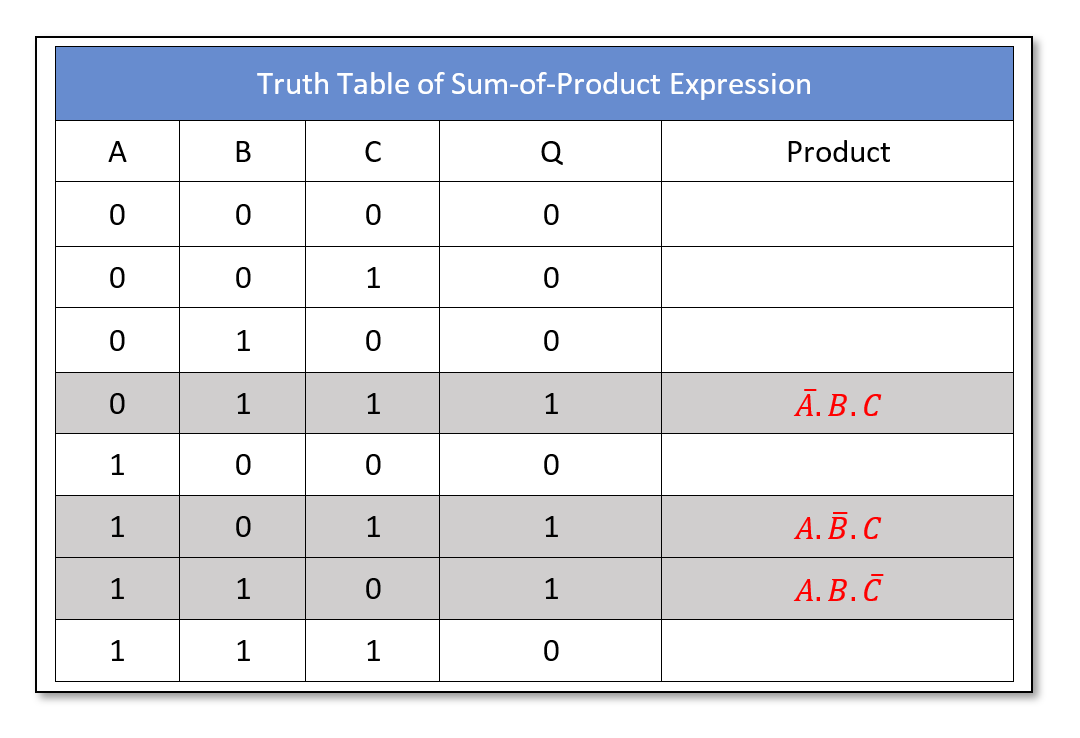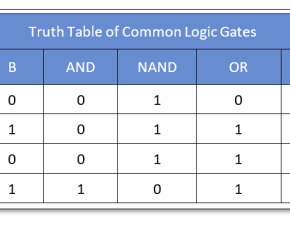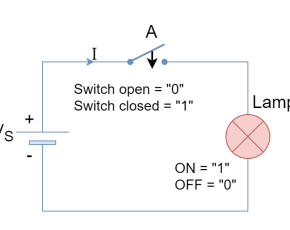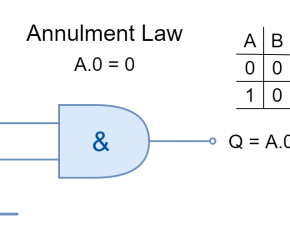Sum of Product
- Muhammad Shahid
- m_shahid@live.co.uk
- 1.341 Views
- 0 Comments
Sum of Product
A digital logic circuit can be represented by Boolean Algebraic expression. It is a simple and effective way to describe digital circuit behavior and switching action. It is known that Boolean Algebra uses a set of rules and laws to reduce the logic gates or Boolean expression whilst keeping the particular logical operation unaltered. The digital logic circuits are constructed using logic gates such as AND, OR, and NOT gates, and these logic gates constitute a “Full Set”. This means that every other logical function can be constructed using the members of a “Full Set”.
Similar to the mathematical operators, there are equivalent logical or Boolean operators. A product or multiplication in mathematics is denoted by “x” between operands and this multiplicative operator produces a product. For example, the multiplication of 4 by 5 is represented by “4 x 5” producing a product of “20”. In expression, it is represented by “4 x 5 = 20”. Similarly, in Boolean Algebra, the multiplication operation is performed by AND function or logic gates. The operands to be multiplied are inputs to the AND gate and this AND’ing produces a product. The Boolean multiplication is represented by a dot (.) between the inputs or operands. In expression, it is represented by “Q = A.B” where A & B are operands and Q is the logical product.
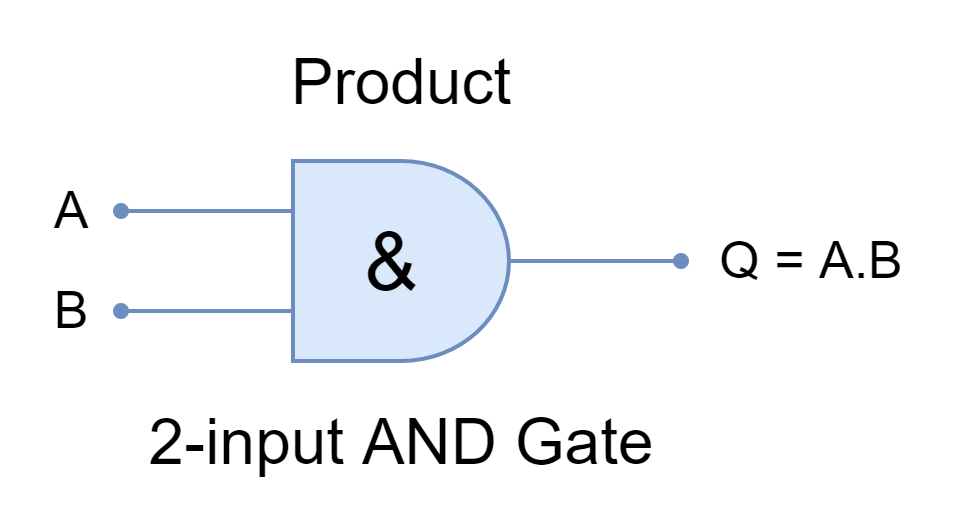
The digital logic circuits use a Boolean data type having only two distinct states i.e. “0” or “1”. The states of “0” and “1” are also represented by “LOW” and “HIGH”, respectively. Whereas, in switching theory, “0” and “1” are referred to as “OFF” and “ON”, respectively.
The Product (AND) Term
In Boolean Algebra, product (multiplications) means resultant/ output of AND operation. The logical inputs are AND’ed together to yield a logical output. The product includes each possible instance of variables having a true or complementary form. These instances occur only once and are called “minterms”. A minterm is a product term in a Boolean function in which every element is present is either in normal or in complemented form. For example, F(A, B) function has possible minterms of AB, A’B, AB’, and A’B’.
These minterms can have two or more input variables or constants with two possible states of “0” and “1”. The following table gives possible input states with all possible combinations.
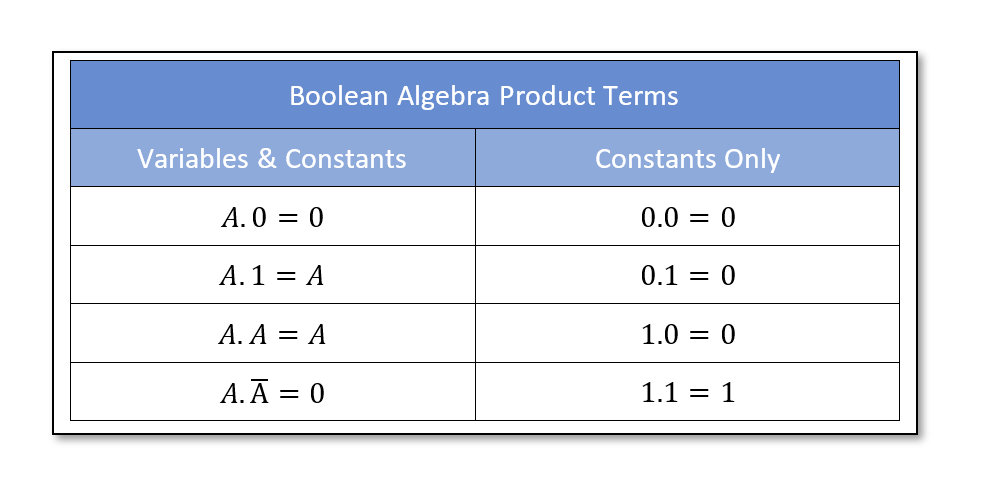 From the above table, the product of two variables can be simplified into a single constant using the following Boolean laws wherein “A” represents a variable input and “0” & “1” as constant inputs.
From the above table, the product of two variables can be simplified into a single constant using the following Boolean laws wherein “A” represents a variable input and “0” & “1” as constant inputs.
Annulment Law
AND operation of a term with 0 is always equal to 0 i.e. A.0 = 0
Complement Law
AND operation of a term with its complement is always equal to 0 i.e. A.A’ = 0
Commutative Law
The AND operation is independent of the order of terms i.e. A.1 = 1.A
Idempotent Law
The AND operation of a term with itself is always equal to term i.e. A.A = A
Identity Law
The AND operation of a term with 1 is always equal to term i.e. A.1 = A
The Sum (OR) Term
As described earlier in this article the AND function is termed as the product term because it produces the product. On the other hand, the OR function can be designated as a Sum term as it produces the sum of inputs/ variables. The OR function is similar to the sum operation of conventional mathematics and is also denoted by a plus (+) sign between operands. In expression form, it is expressed as “Q = A + B” where A & B are input variables and Q is the sum term.
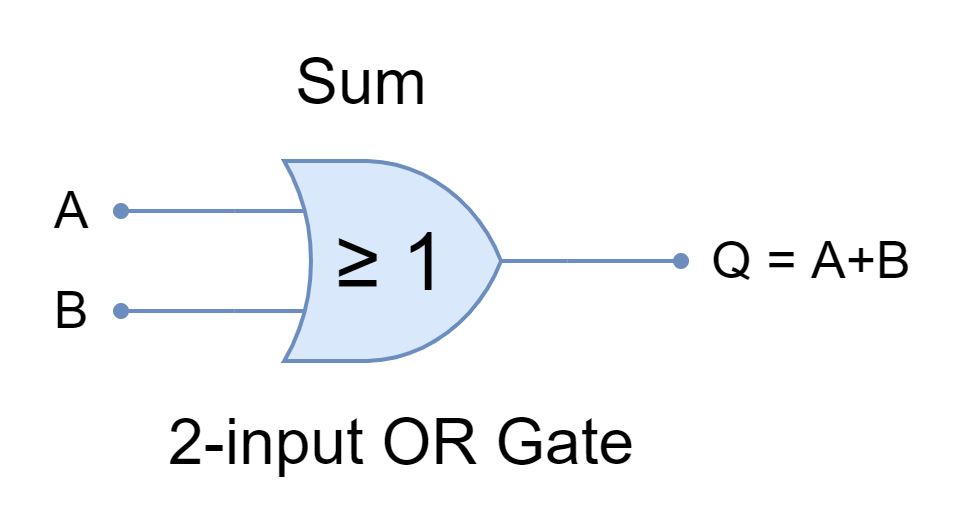
Sum of Products
In a nutshell, the AND function gives the logical product of Boolean multiplication. Likewise, the OR function gives the logical sum of Boolean addition. However, most digital circuits consist of multiple logic gates including AND, OR, and NOT gates which constitute combinational logic circuits. The combinational logic circuits are widely expressed as Sum-of-Products or Product-of-Sums as they include both AND, and OR functions, mainly.
The Sum-of-Products (SOP) expresses the combinational logic as two or more products are summed together. In logical terms, the outputs of two or more AND functions (constituting products) are connected to OR function (summed together) to give Sum-of-products. It is an AND-OR logic operation having two or more AND terms and only one OR term. A few examples of Sum-of-Product (SOP) are given below:
 The Boolean expressions are not always in standard sum-of-product (SOP). The non-standard forms can be converted to the sum-of-product form. In the following example, a non-standard Boolean expression is converted to sum-of-product (SOP).
The Boolean expressions are not always in standard sum-of-product (SOP). The non-standard forms can be converted to the sum-of-product form. In the following example, a non-standard Boolean expression is converted to sum-of-product (SOP).
 Constructing a Truth Table from Sum-of-Product (SOP) Expression
Constructing a Truth Table from Sum-of-Product (SOP) Expression
A truth table can be constructed from a sum-of-product expression and, conversely, a sum-of-product expression from a truth table. The terms in the sum-of-product expressions produce a logic “1” for that specific input state of terms. For example, the A.B.C term will produce a “1” state when A=1, B=1, & C=1. Similarly, A.B.C’ is “1” when A=1, B=1, & C=0. In a similar manner, the truth table is constructed for all the terms for that specific inputs’ state and their output is set to “1”. The output of all other states is set to “0”. Consider the following Boolean expression:
 The following truth table is drawn for all of the possible states of A, B, and C. The output of the above expression is set to “1” for all the terms of sum-of-products expression at their specific input states.
The following truth table is drawn for all of the possible states of A, B, and C. The output of the above expression is set to “1” for all the terms of sum-of-products expression at their specific input states.
It is obvious from the above table that product terms are set to “1” for that specific state of inputs and the rest of the output states are set to “0”. When any of the terms is “1” then OR (sum) function sets the output to “1”.
Likewise, a Boolean sum-of-product (SOP) expression can be constructed from a given truth table. Consider the following truth tables.
 From the above truth table, the following sum-of-products expression is derived.
From the above truth table, the following sum-of-products expression is derived.
 Sum-of-Product Example
Sum-of-Product Example
Consider the following given Boolean expression:
 The expression is in non-standard form of the sum-of-product and as such converted into SOP form:
The expression is in non-standard form of the sum-of-product and as such converted into SOP form:
 The following truth table is constructed from the above sum-of-product expression.
The following truth table is constructed from the above sum-of-product expression.
 From the given sum-of-products expression following logic diagram is created.
From the given sum-of-products expression following logic diagram is created.
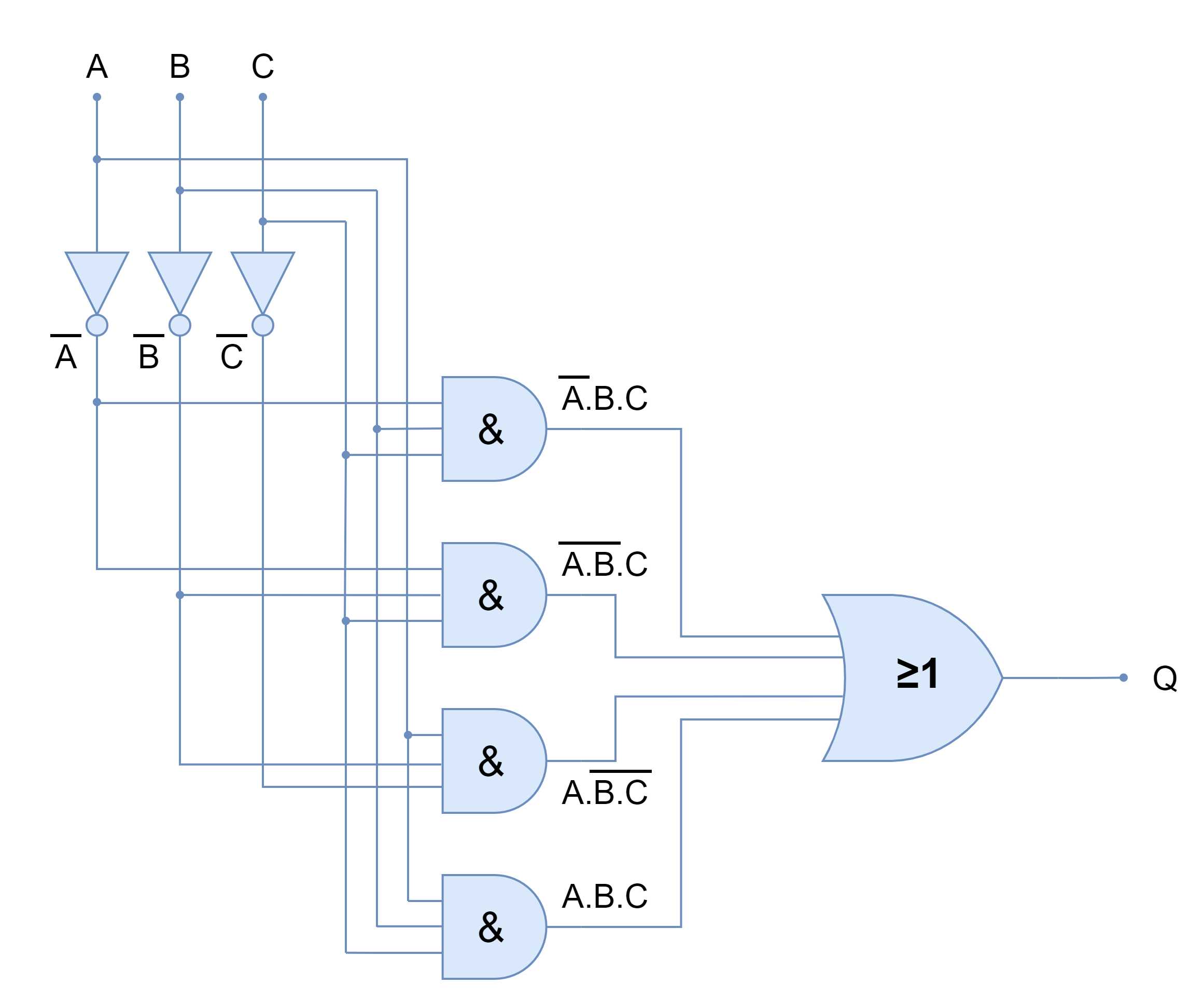
Following the above example, any non-standard expression can be converted into a sum-of-product expression and a truth table from it.
Conclusion
- A Sum-of-Product expression is a logical equivalent of two or more AND functions that are summed together. It is AND-OR logic which has more than two AND logics and only one OR logic.
- In Boolean, the logical AND function performs multiplication and produces a product. Whereas, the logical OR function performs addition and produces a sum. In this way, the AND-OR logic is given the name of sum-of-product.
- A minterm is a product term in a Boolean function in which every element is present is either in normal or in complemented form.
- The combinational digital circuits consist of AND, OR, and NOT logic gates and are commonly described in sum-of-product (SOP).
- A truth table can be constructed easily from the given sum-of-products expression and vice versa.
- In the truth table, the outputs are set to “1” for terms included in the sum-of-products expression at that specific input state only, and the rest of the outputs are set to “0”.




